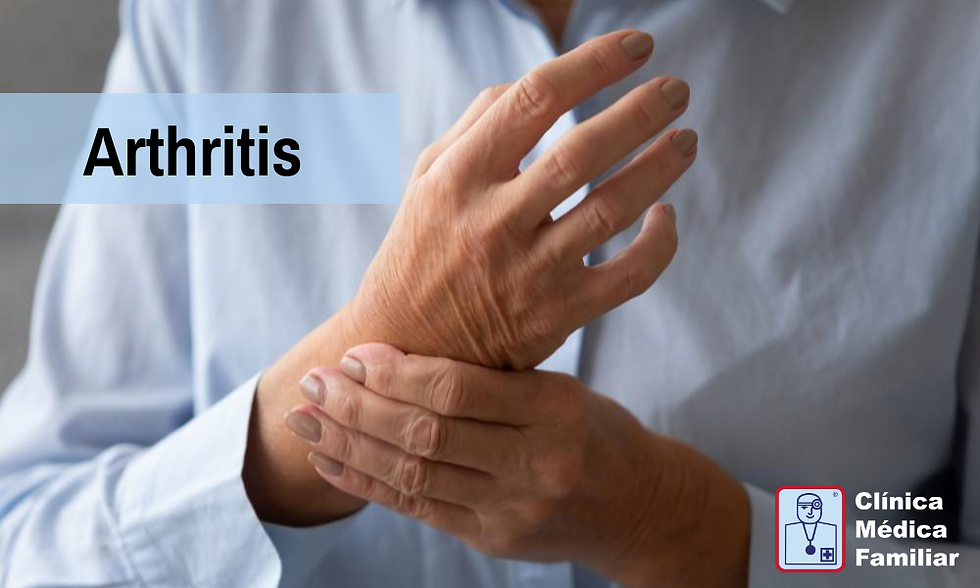Osteoarthritis: Causes, Symptoms, and Treatment
- Nora Manzo
- Jul 25, 2022
- 3 min read

Arthritis is a general term used for conditions that cause joint pain, stiffness, swelling, and other joint symptoms. The protective cartilage between bones starts to wear away. This allows the bones to rub together, which can cause pain and stiffness.
Osteoarthritis is the most common type of arthritis and affects middle-aged or older people most frequently. It is caused by the breakdown of cartilage in joints and can occur in almost any joint in the body. It most commonly affects the hips, knees, hands, lower back, and neck. Cartilage is a firm, rubbery material that covers the ends of bones in normal joints. It serves as a kind of "shock absorber," helping to reduce friction in the joints.
It is an age-related condition, which means it tends to develop later in life. However, the condition is known to develop in younger people when joints are overused, such as during athletic injuries and obesity.
What is the cause?
Obesity causes osteoarthritis by increasing the mechanical stress on the joint and therefore on the cartilage. In fact, next to aging, obesity is the most significant risk factor for osteoarthritis of the knees. The early development of osteoarthritis of the knees among weight lifters is believed to be in part due to their high body weight. Repeated trauma to joint tissues (ligaments, bones, and cartilage) is believed to lead to early osteoarthritis of the knees in soccer players and army military personnel.
Visual Signs of Osteoarthritis
Pain
Swelling
Stiffness
Cracking and creaking
Reduced range of motion
Muscle Weakness
Numbing and tingling
Bone spurs
Pay special attention to joint aching and soreness, especially during movement, and pain after overuse or inactivity. As osteoarthritis advances, these symptoms will become more intense. Over time, the affected joint and surrounding area may swell.
Diagnosis
If you suspect you have osteoarthritis, you should visit your primary care physician for a physical examination. The doctor will check the affected joints for tenderness, swelling, redness, and flexibility. If osteoarthritis is suspected, the doctor will recommend one or more of several test options.
Blood tests – Certain blood tests can help rule out other causes of joint pain, like rheumatoid arthritis, narrowing your doctor’s field of potential diagnoses.
Joint fluid analysis – In this test, your doctor will use a syringe to draw fluid from the affected joint. They then test the fluid to determine whether the inflammation is caused by an infection or gout, homing in on a definitive diagnosis.
Confirmation of the diagnosis can be made with X-ray imaging. Characteristic changes to the joints, particularly involving the cartilage and bone in the area are usually evident.
Treatment:
There is no cure for osteoarthritis. As a result, most treatments focus on slowing joint degeneration, managing symptoms, and preventing further damage. The treatment your doctor prescribes will likely depend on the severity of your symptoms and their location. Treatment will include a combination of three categories: medication, therapy, and surgical procedures.
Clinica Medica Familiar is a family medicine practice that is offering Covid vaccines in our three locations: Magnolia, Mead Valley, and Montclair. Please call us at 855-505-7467 to schedule you today or visit our website https://www.clinicamedicafamiliardrrios.com/booking-calendar
In order to help stop the spread of the flu, Clinica Medica Familiar is NOW offering Telemedicine(Telehealth/video call)and Flu Shots. Please call us at 855-505-7467 to learn more about these amazing services and bilingual providers, we are now providing services throughout Corona, Montclair, Riverside, Perris, Moreno Valley, Lake Elsinore, Temecula, and Indio.







Comments